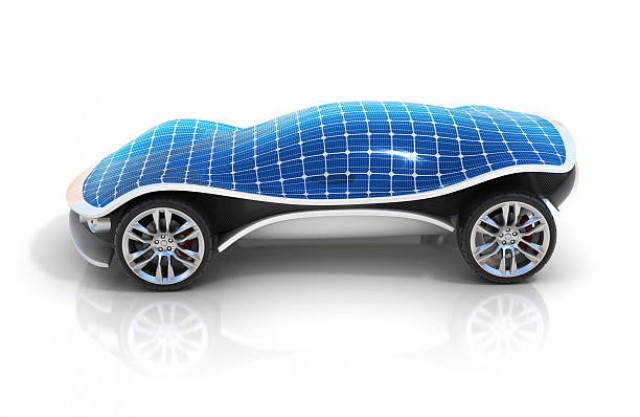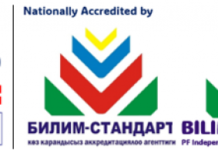The solar-powered vehicle market is estimated to reach USD 5,359 million by 2030, at a compound annual growth rate (CAGR) of 37% during the forecast period, according to the SNS Insider report.
(Isstories Editorial):- Austin, Texas Oct 24, 2023 (Issuewire.com) – As per SNS Insider’s research, the solar-powered vehicle market is on an upward trajectory, driven by environmental consciousness, technological advancements, government support, economic benefits, and innovative infrastructure.
More on Isstories:
- Storm Pro Solution Extends Support to Nebraskans Affected by Recent Tornad
- Young Musical Virtuosos from 14 Nations Mesmerize at 2024 Grand Metropolitan International Music Competition Finals
- Book Launched “Sales me Safalta ke Gupt Siddhant” in Hindi Language on Sales Management
- Let’s Visit America on This Summer with US VISA Online
- Time to Visit America with the Help of USA Online Visa
The solar-powered vehicle market, valued at USD 431.86 million in 2022, is projected to expand significantly, reaching USD 5,359 million by 2030. This growth is anticipated to occur at a compound annual growth rate (CAGR) of 37% during the forecast period from 2023 to 2030, according to the SNS Insider report.
Get a Sample PDF Brochure: https://www.snsinsider.com/sample-request/1809
Market Report Scope
A solar-powered vehicle is an automobile that utilizes solar energy as its primary source of power. Solar-powered vehicles produce zero emissions, making them an environmentally friendly alternative to traditional vehicles. This significantly contributes to reducing air pollution and combating climate change. Solar-powered vehicles reduce dependence on fossil fuels, promoting energy independence. As long as the sun shines, these vehicles can harness energy, making them a sustainable and reliable mode of transportation. The development of solar-powered vehicles encourages innovation in the fields of solar technology, energy storage, and automotive engineering. This leads to advancements that benefit various industries and society as a whole.
Market Analysis
One of the primary drivers behind the solar-powered vehicle market’s surge is the increasing global awareness of environmental issues. Concerns about climate change, pollution, and depleting fossil fuel reserves have prompted governments, organizations, and individuals to embrace sustainable practices. Solar-powered vehicles, emitting zero emissions and reducing the carbon footprint, align perfectly with these eco-conscious efforts. As eco-awareness continues to rise, the demand for solar-powered vehicles is expected to soar. In recent years, significant advancements in solar technology have enhanced the efficiency and affordability of solar panels. Breakthroughs in photovoltaic cells, energy storage systems, and lightweight materials have made it feasible to integrate solar panels seamlessly into vehicle designs. This technological progress has led to the development of solar-powered cars, buses, and even bicycles, offering a wide range of options to consumers. As research and development in solar technology continue, solar-powered vehicles are becoming increasingly viable for mainstream adoption. Governments worldwide are implementing favorable policies and incentives to promote renewable energy and sustainable transportation. Subsidies, tax benefits, and grants provided to manufacturers and buyers of solar-powered vehicles significantly reduce the initial costs, making these vehicles more attractive to consumers.
Impact of Recession
The ongoing recession has prompted consumers to reassess their purchasing patterns, seeking more sustainable and cost-effective alternatives. In this context, solar-powered vehicles have gained traction as a viable solution. The recession has acted as a catalyst for innovation within the solar-powered vehicle sector. Industry players are investing in research and development to enhance solar technology, increase energy efficiency, and reduce manufacturing costs. These advancements have not only bolstered the solar-powered vehicle market’s resilience but have also positioned solar-powered vehicles as a more competitive choice in the automobile industry.
Buy Now: https://www.snsinsider.com/checkout/1809
Impact of Russia-Ukraine War
While the Russia-Ukraine war has created challenges for the solar-powered vehicle market, it has also spurred discussions and actions towards achieving energy independence and sustainability. Navigating through these challenges requires adaptability, innovation, and collaboration within the industry. As the global landscape evolves, solar-powered vehicle manufacturers and stakeholders must remain vigilant, proactive, and innovative to ensure the continued growth and sustainability of the market in the face of geopolitical uncertainties.
Key Regional Development
North America stands as a pioneer in the solar-powered vehicle market, driven by a strong emphasis on clean energy initiatives. The region’s robust infrastructure and favorable government policies incentivize the adoption of solar-powered vehicles. Europe is at the forefront of the green revolution, with countries like Germany, France, and the Netherlands leading the way. Incentives such as tax benefits, subsidies, and stringent environmental regulations drive the solar vehicle market in this region. The Asia-Pacific region, especially countries like China, Japan, and India, is witnessing a surge in solar-powered vehicle adoption. Rising concerns about air pollution, coupled with government initiatives promoting electric and solar vehicles, are key factors driving market growth.
Key Takeaway from Solar-Powered Vehicle Market Study
- The Battery Electric Vehicle (BEV) Segment represents a paradigm shift in the automotive industry, emphasizing the use of electric power to propel vehicles. Unlike hybrid vehicles, BEVs rely entirely on electric power stored in advanced batteries. With the rising concerns over climate change and depleting fossil fuel reserves, BEVs have gained widespread acceptance.
- The Lithium-ion Battery Segment serves as the backbone of solar-powered vehicles, providing the energy storage necessary for sustainable and efficient operation. Lithium-ion batteries exhibit a long cycle life, providing durability and reliability over an extended period. This longevity ensures that solar-powered vehicles equipped with lithium-ion batteries offer a sustainable and long-term transportation solution.
Browse Full Report Details: https://www.snsinsider.com/reports/solar-powered-vehicle-market-1809
Recent Developments Related to Solar-Powered Vehicle Market
- Carlsbad’s leading solar-powered car manufacturer has engineered a fleet of solar-powered vehicles, ushering in a new era of sustainable and eco-friendly driving. These state-of-the-art automobiles harness the power of the sun to propel them, making them a symbol of cutting-edge technology and environmental responsibility.
- EVIG, a pioneering company in the realm of renewable energy transportation, unveiled its latest innovation: the Solar-Powered Vehicle. During the debut event, EVIG’s spokesperson highlighted the vehicle’s impressive features, emphasizing its efficiency, speed, and reliability. The vehicle’s advanced energy storage systems ensure uninterrupted performance, even during cloudy days or nighttime driving, making it a practical choice for everyday use.
Related Report:
Automated Guided Vehicle (AGV) Market Size, Share and Segmentation by Type (Fixed Mounted, Helmet Mounted), by Navigation Technology (Combiner, Video Generator, Projector Unit), by Industry (Automotive Industry, Military & Civil Aviation Sector), by Regions – Global Market Forecast 2023-2030
About Us:
SNS Insider is one of the leading market research and consulting agencies that dominates the market research industry globally. Our company’s aim is to give clients the knowledge they require in order to function in changing circumstances. In order to give you current, accurate market data, consumer insights, and opinions so that you can make decisions with confidence, we employ a variety of techniques, including surveys, video talks, and focus groups around the world.

SNS Insider Pvt Ltd
[email protected]
+1-415-230-0044
Office No.305-B, Arissa Avenue, Fountain Road, Kharadi, Pune, Maharashtra 411014
http://www.snsinsider.com
This article was originally published by IssueWire. Read the original article here.

































